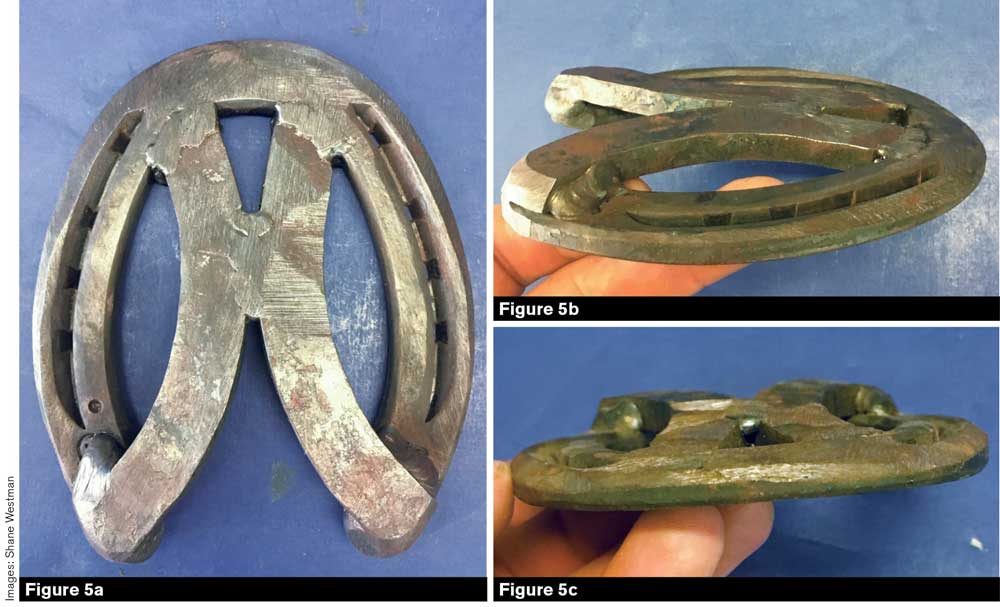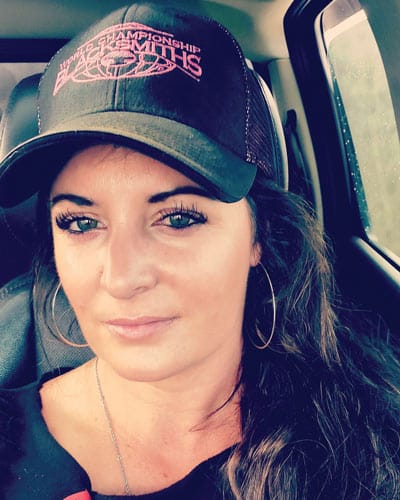When a horse needs an omni-directional or light-rail shoe, the options often can be cost-prohibitive. However, there’s an easy way to avoid denting your bottom line.
There are several ways to achieve this welding modification by using bar or round stock, but the most cost-efficient way is to simply cut up an old shoe from your scrap pile, as University of California, Davis farrier Shane Westman did to assist an arthritic horse.
If you’re handy, jump welding the inserts to the inside web of the ground surface certainly will be effective. However, a simpler and possibly more reliable alternative is using a welder. After welding the inserts, Westman used a grinder to easily achieve a slight belly for a rolling motion to reduce leverage from the hoof wall. Impression material can be added if you wish to keep the sole/frog engaged with the ground or on firmer footing, which is the main concern with the added depth.
When a hoof has been overly shortened to where the sole is thin or over-bearing weight, inserts can be welded in the middle of the shoe from the toe to heel (Figures 5a-c). The middle rails can be adjusted as high or low as necessary. The omni-directional rocker, as Westman refers to it, creates depth and allows the shoe to be placed while not burdening the sole. In addition, this application can also be used in cases such as osteoarthritis (OA) when more roller help is needed, as it creates a deeper roll than a rolled toe. It is often difficult to pinpoint exactly where the bony changes are in a joint, and horses tend to want to break in the direction of the OA. Rather than dictating the direction of the roll over, like with a rocker toe, the omni-direction provides leverage reduction in multiple directions and lets the horse move most easily in the direction they prefer.
For optimum results, the strategy for the mechanical plan is developed from pre-trim/shoeing radiographs. The lateral and dorso-palmar (DP) views require a low-beam perspective (½ to ¾ inch above the positioning block). This produces an image that reveals one branch of the shoe and the wings of P3 superimposed when medial lateral rim balance is present. Often radiographs are required to fine-tune the palmar angle (PA), medial lateral rim and joint balance, digital breakover and the degree of mechanical deep digital flexor tendon (DDFT) tension let off before final decisions are made. It is beneficial to have post shoeing radiographs as they can confirm whether the mechanical plan was met. The post shoeing images become a valuable reference point for comparative images and a means of monitoring the efficacy of the chosen plan. Shoeing with X-ray guidance is focused on enhancing the healing environment by mechanically shifting load from vascular deprived components to more healthy parts of the foot.
Learn More
- Benefits of the Omni-Directional Horseshoe: Extensive experience and knowledge are required before application.










Post a comment
Report Abusive Comment